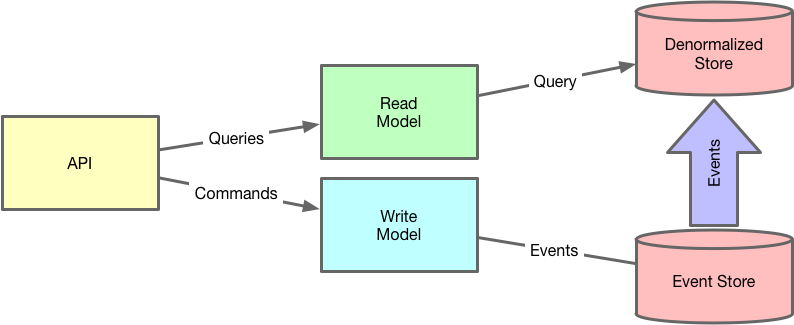Projections
A projection can be defined in a context
to improve query performance across a large number of entities by providing
a read-only view of persistent state across a set of entities.
Projections are necessary since persistent entities use event sourcing which is not a query-friendly data layout since it is merely a sequential event log that indicates what changed. To query this event log one would have to reconstruct the current state from each entity’s set of events which could be exceedingly time-consuming.
Queries involving only a single entity never need a projection since the query can be satisfied quite simply by examination of a single entity. When a query must search multiple entities then projections are needed to satisfy that query quickly. Otherwise, a complete scan of all the entities and the reconstruction of each of them would be needed.
Because of the foregoing, projections may only be defined in a context or a domain. This requirement limits the set of entities over which the projection is defined to the set reachable as descendents of that context or domain.
context Example {
entity A { state a { a: Integer, A: String } }
entity B { state b { b: String, B: Integer, ARef: Id(A) } }
projection "A-and-B" {
for entity A {
A: String
c: Date
}
for entity B {
B: Integer
ARef: Id(A)
}
query GetRecentB {
requires { earliestDate: Date }
fetch(B)
from(A,B)
where(A.c >= @earliestDate)
}
}
}
A projection definition Projections are constructed by handling events.
Here’s the projection process. Usually, events are logged as they are kept appended at the end of the log file. Logs are string and text. To retrieving meaningful information out of logs, logs are transformed into a more query-friendly format and stored in queriable repository or DB.

